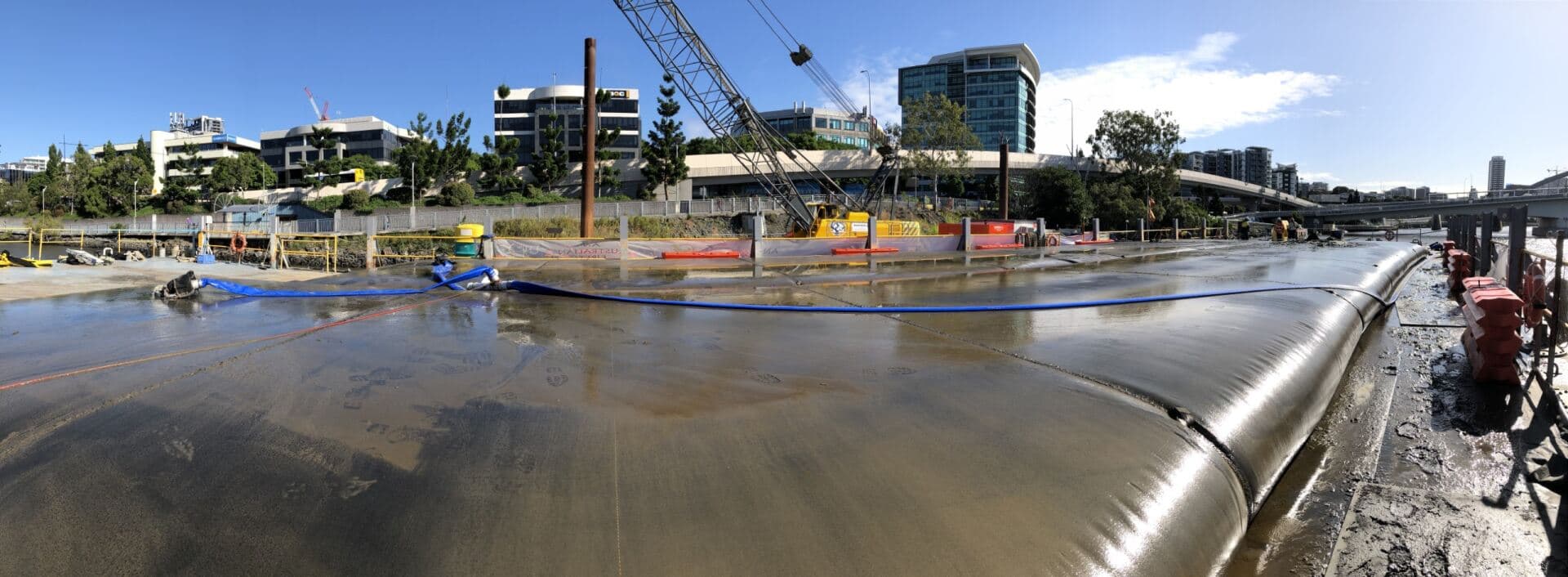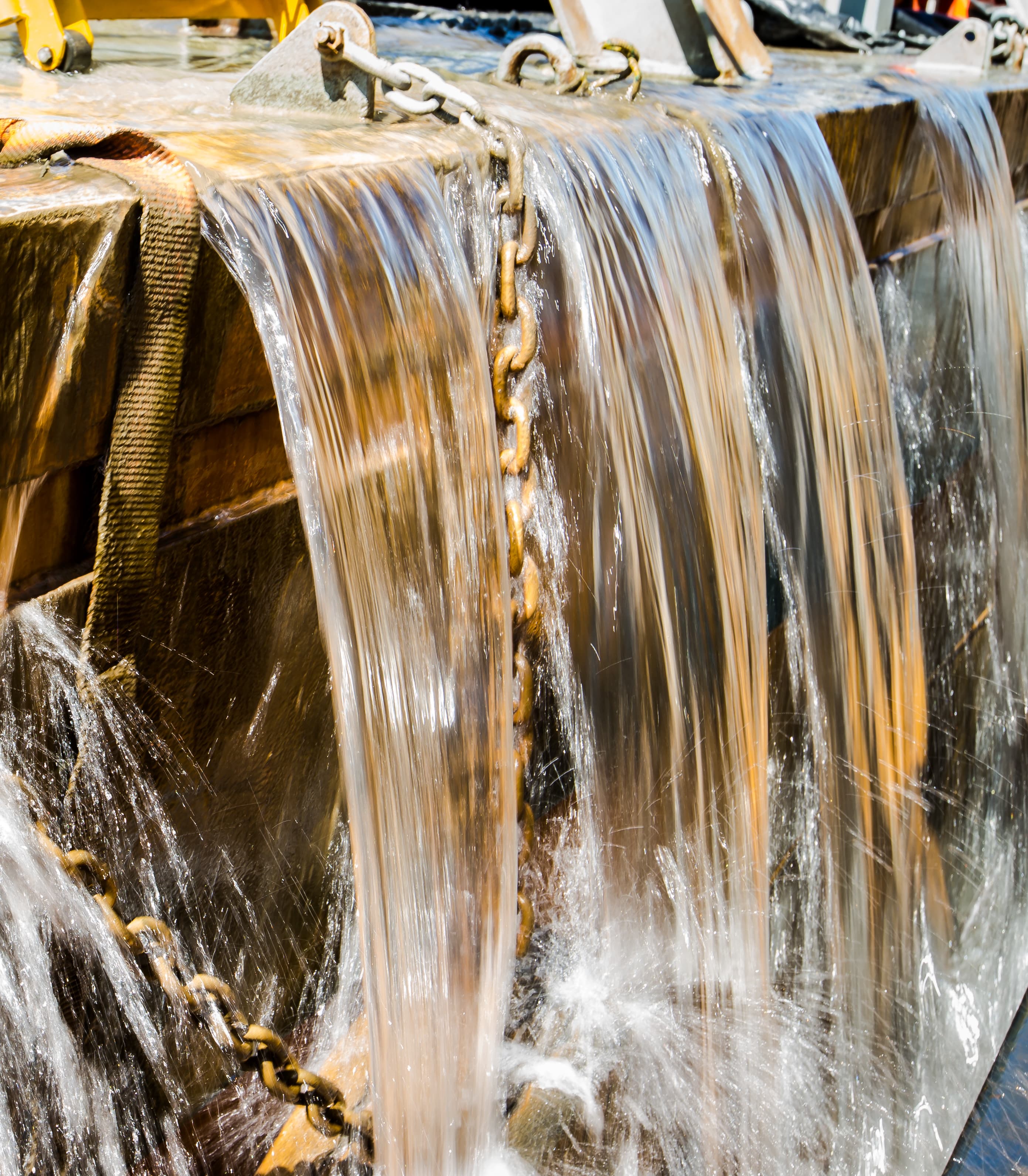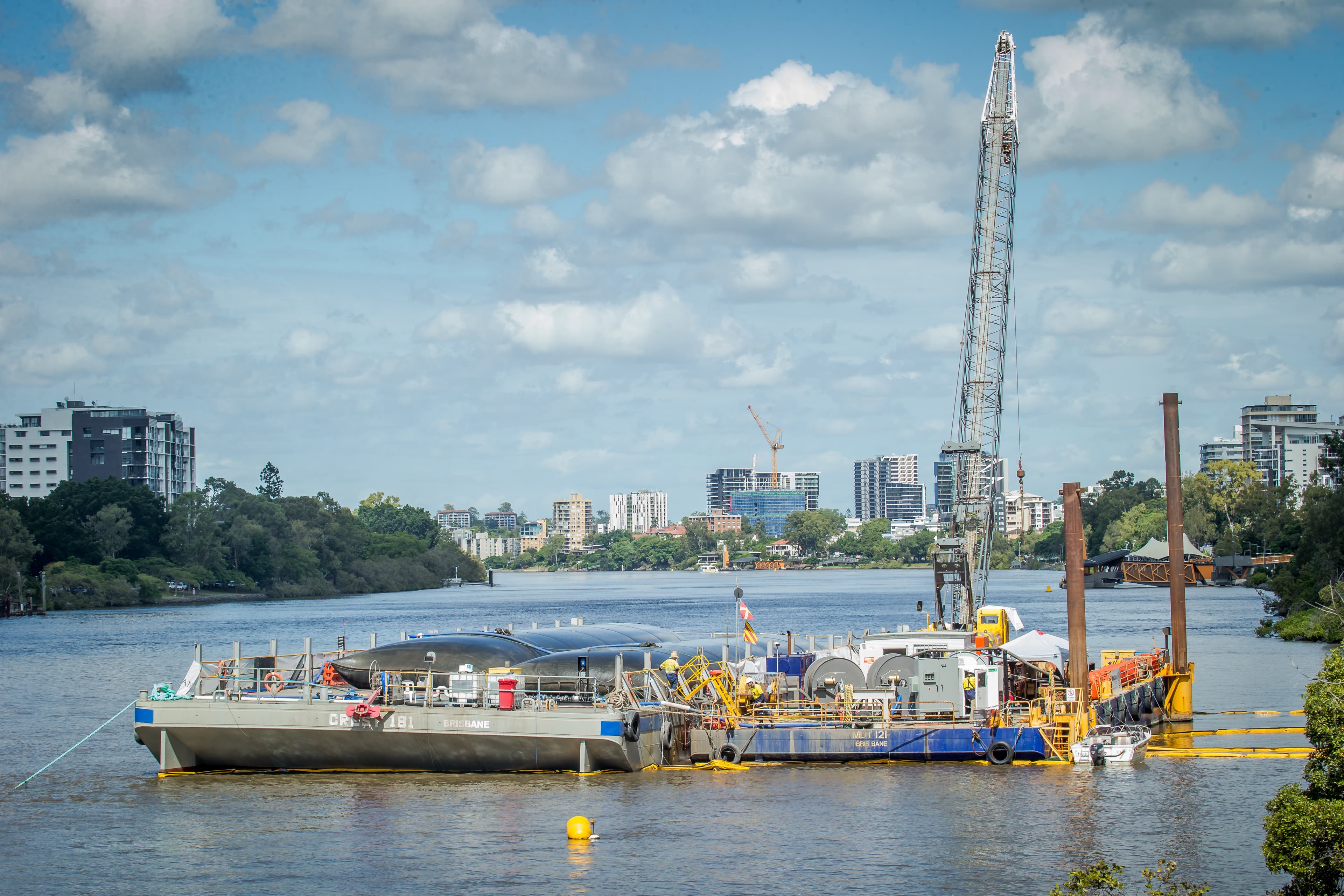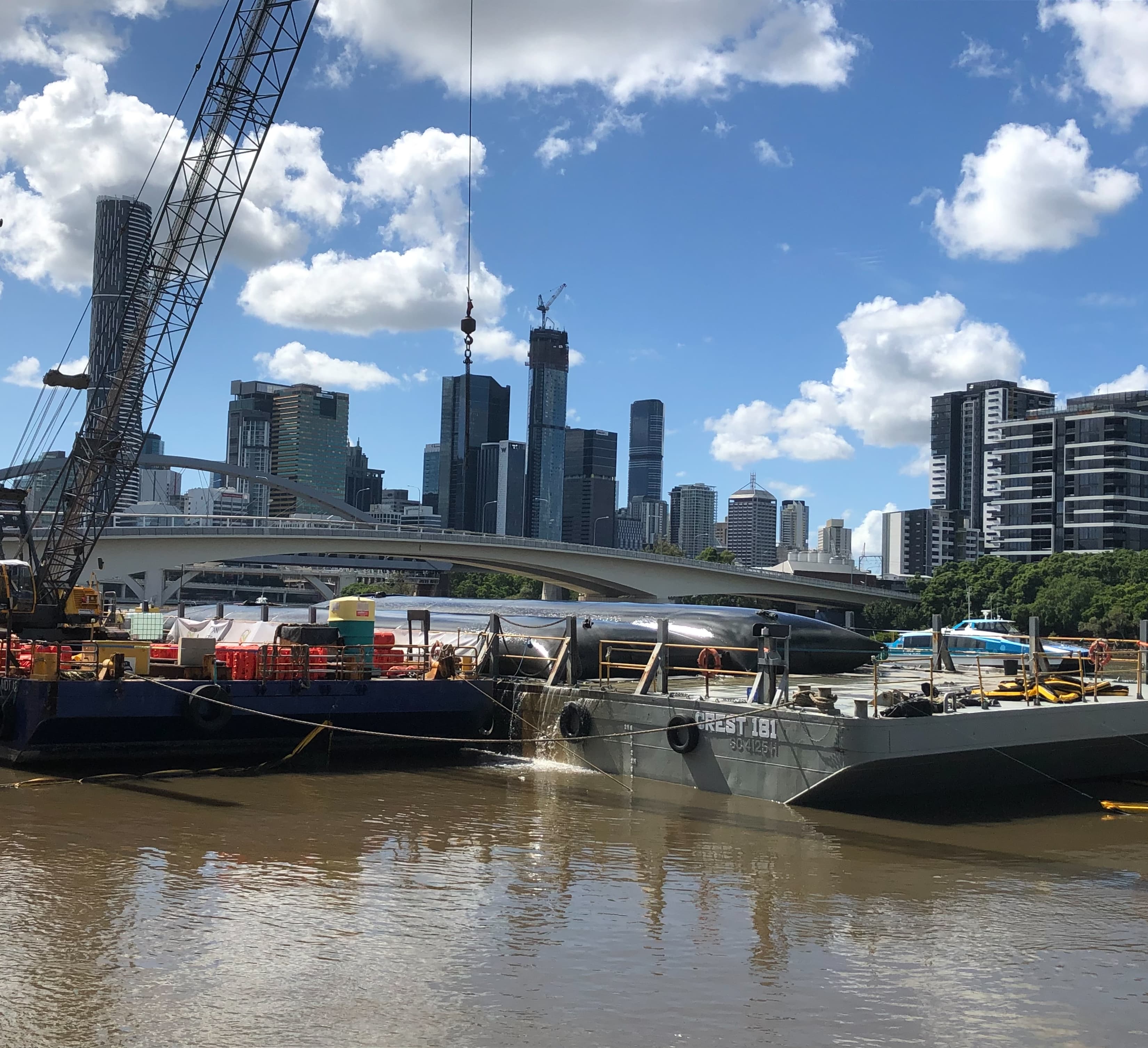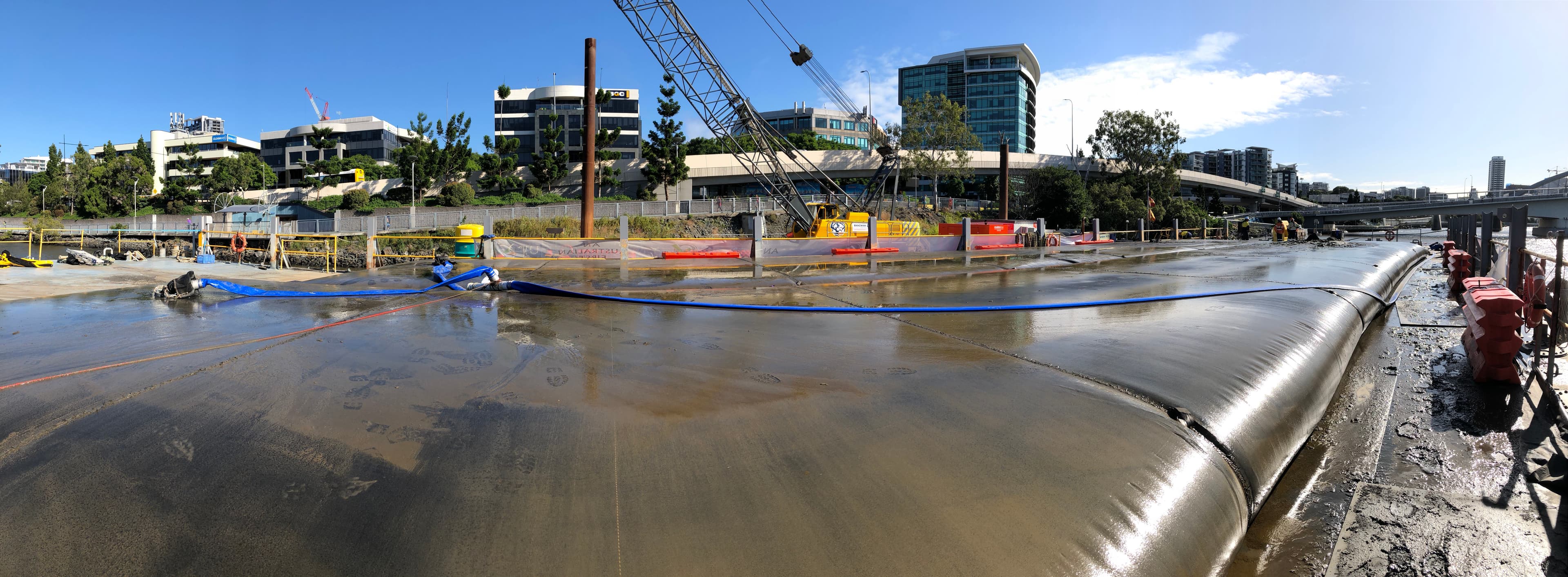Overview
In a groundbreaking project in Australia, a specially designed remote-controlled underwater dredger was used to clear and clean a blocked stormwater drain that discharged into the Brisbane River. The excavated sediments were pumped into GEOTUBE® dewatering units placed on a barge in the river. This complex undertaking required innovative solutions to meet operational and environmental requirements.
Challenge
The blocked stormwater pipe was located underwater, necessitating dewatering from barges anchored in the Brisbane River. The specialist contractor faced the challenge of containing sludge excavated by the remote-controlled underwater dredger in a constrained and highly visible location while complying with stringent environmental and operational standards. The project also required finding a way to contain and dewater sediments that varied in composition from contaminated clay to residual sand and preventing any accidental discharge of contaminated sediments into the river.
Solution
After discussing the challenges with Desilting Solutions, an expert contractor in remote underwater dredging, it was proposed to place two GT500D GEOTUBE dewatering units, each measuring 30.6m (100 feet) in length, adjacent to each other on a barge. The barge would be positioned next to another barge controlling the remote dredging equipment.
The sediment excavated by the remote dredger would be pumped into the GEOTUBE dewatering units on the barge. The dewatered sediments would then be transported downstream, where they could be excavated and disposed of properly. The discharged liquids from the dewatering units are needed to meet environmental requirements before being released back into the river.
To ensure efficient dewatering, the sediments needed to be treated with a polymer flocculant. To determine the appropriate polymer type and concentration, a representative sample of the dredge slurry was analyzed in the Geofabrics Center of Excellence Laboratory. A specialized polymer supplier was engaged to provide the dosing equipment required for this aspect of the project. The saline nature of the river water added complexity to the polymer dosing process.
Other challenges, such as maintaining the stability of the 30.6 m (100 ft)-long tubes during the filling process and preventing displacement caused by the movement of nearby Brisbane CityCat water-taxi boats, were addressed by placing water-filled road barriers along the outer edge of each tube.
